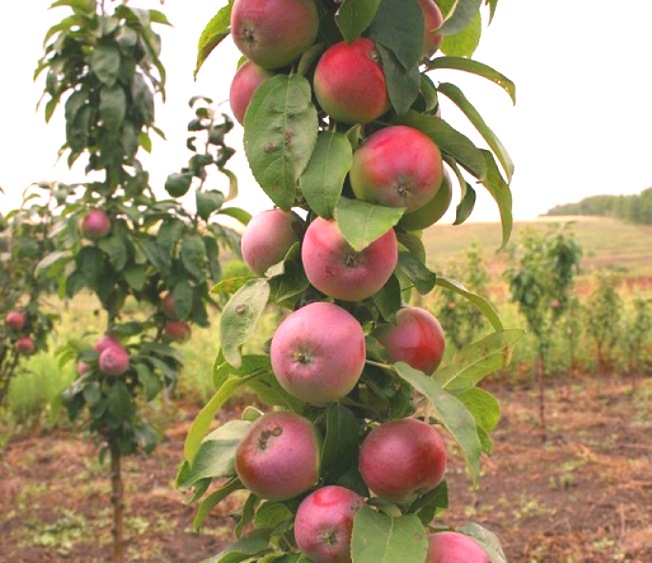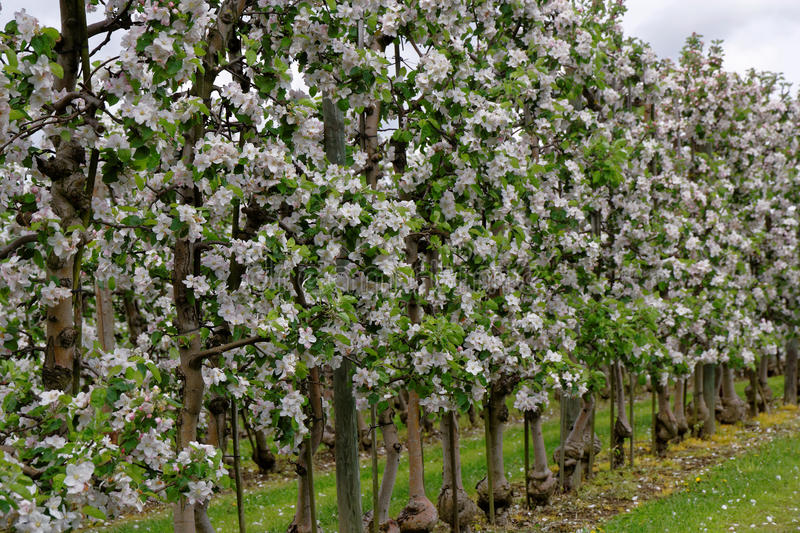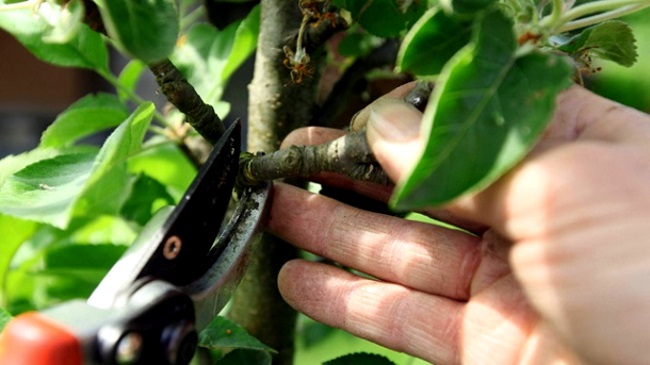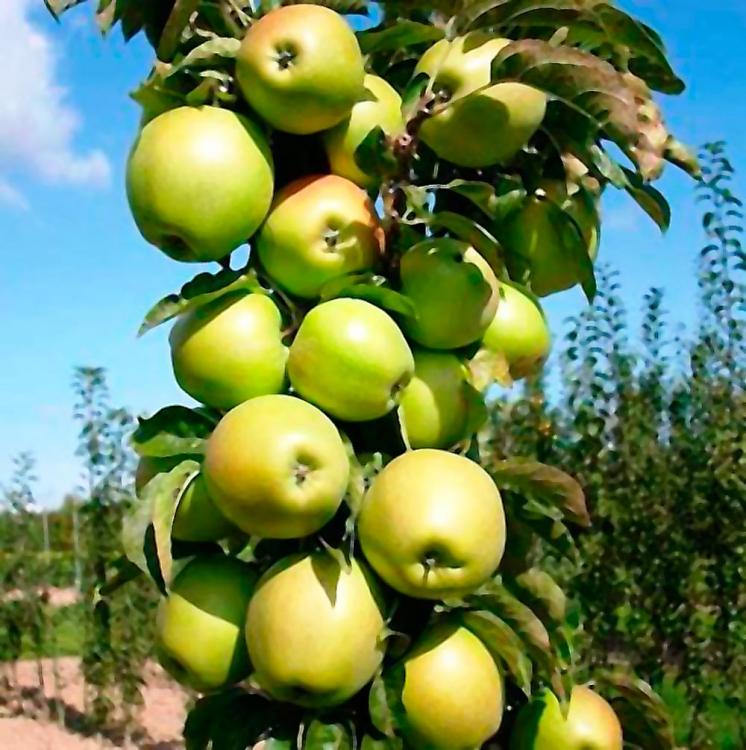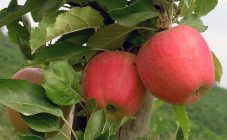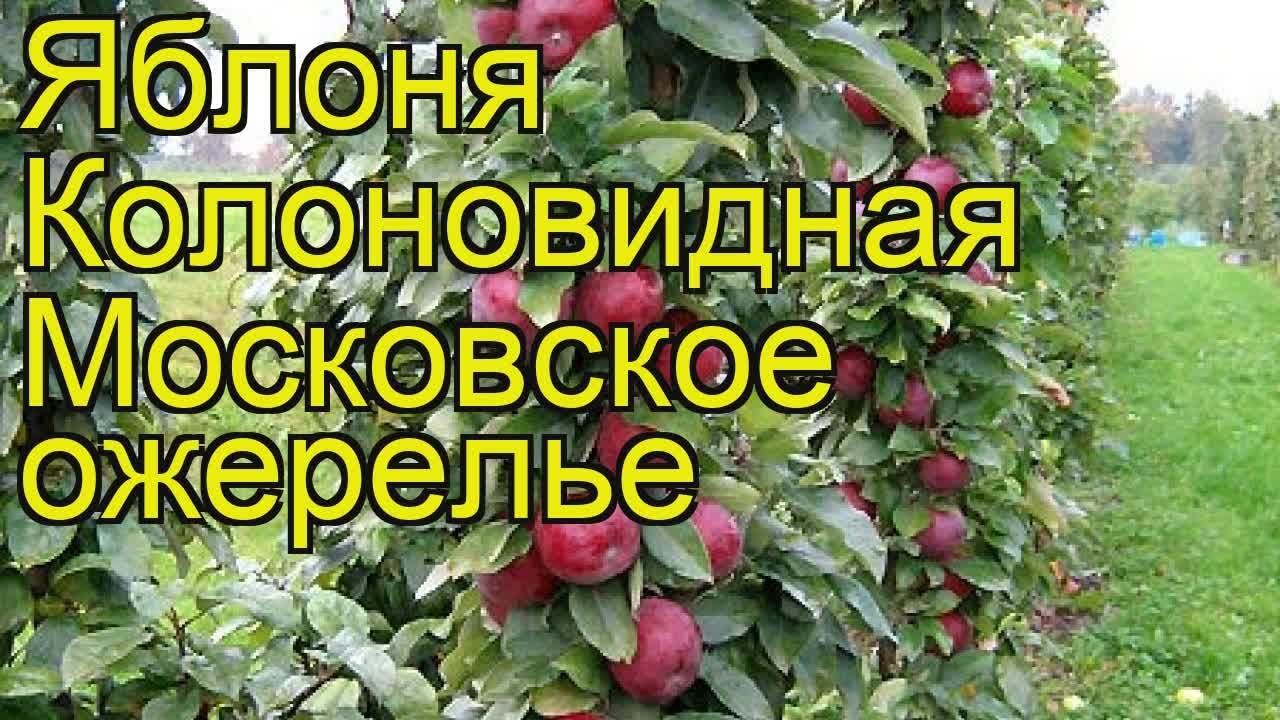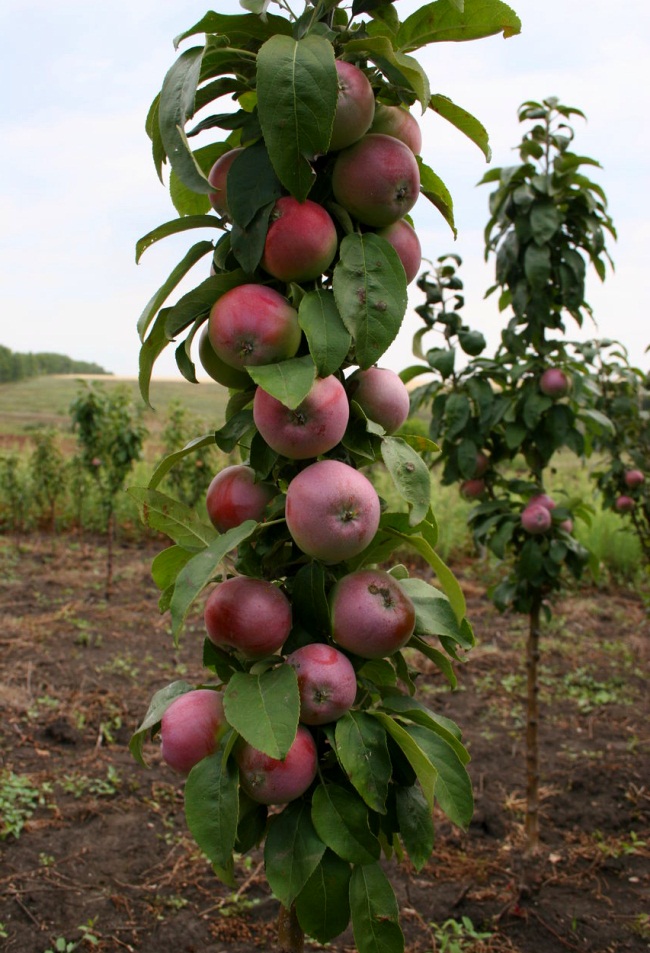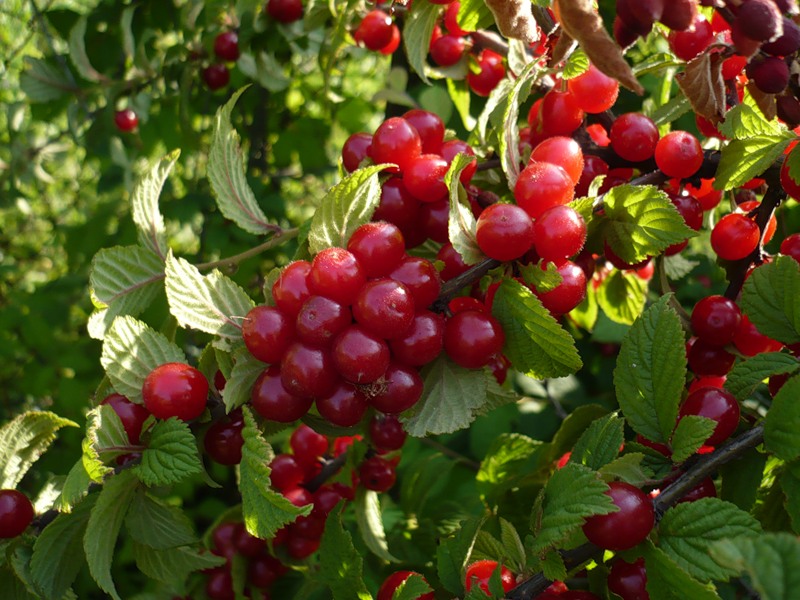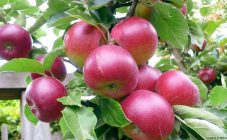Content:
The development of new varieties of columnar apple trees is one of the top priorities in the selection of garden trees. Today in Russia there are already a number of achievements worthy of attention. For example, large gardeners and ordinary owners of summer cottages should take a closer look at the Currency apple variety.
Apple tree Columnar currency
The apple tree is the most widespread fruit crop in the world. It belongs to the Pink family, includes a number of varieties and is a perennial plant of a woody or shrub form.
Yablonya Currency was obtained in 1986 at VSTISP (Moscow) by purposeful hybridization of the elite form KV-6 and the donor form of the American selection OR38T17. After 6 years, the resulting hybrid was allocated to the elite, and in 1994 it was submitted for state variety testing. In 2004, he was successfully entered into the State Register of Breeding Achievements. Today the variety is widespread in the Moscow region, the Central zone of Russia and other regions of the country.
Characteristics of the apple tree columnar Currency and description of the variety
The currency belongs to the columnar varieties, which are distinguished by their compactness. In height, they usually do not exceed two meters, and in width they occupy an average of 20 cm.
The fruits are large, rounded. As they ripen, they acquire a yellow amber color with red markings on the sides. The peel is thin, glossy. The mass of the apple varies from 100 to 250 g. The taste of the fruit is very sweet, with a slight sour taste. The foliage is bright green.
The currency refers to winter varieties of apple trees, which are harvested in the first half of October. A notable varietal feature is the absence of fruit shedding, which makes it possible not to rush to harvest.
The flowering of annual seedlings, planted in spring or autumn, begins in the first year. In the 4th year, they begin to get a full harvest - about 5 kg of fruits from each tree. In peasant farms, from one hectare of plantations, Currencies receive 100 tons of apples. Thanks to the use of fertilizers, this figure can be increased to 150 tons.
After 15 years of seedling cultivation, the yield begins to decline. This is due to the fact that the ringlets dry out in the lower part of the plant. In this regard, it is necessary to timely prepare replacement for old trees.
The variety is not self-fertile. Therefore, it is necessary to grow 2-3 more apple varieties nearby, which could serve as pollinators.
Agrotechnical features of cultivation
When purchasing a seedling, you need to pay special attention to the fact that it does not have any mechanical damage, traces of damage by harmful insects or diseases. The plant should not have leaves (they are previously removed) to prevent the seedling from drying out. The planting material must be annual.
Landing
Like all columnar varieties, Currency is recommended for cultivation in intensive horticulture conditions. Plants are planted at a distance of half a meter from each other, the row spacing is made equal to 1 meter, but there can be more solid distances.It is advisable to place seedlings from the south, sunny side. During the day, a slight partial shade is allowed.
When digging a planting hole, you should be guided by the size of the root system. The wider it is, the larger the hole should be. The roots should be located in it freely, without bending. A wooden peg is installed in the hole and a seedling installed in the hole is tied to it. After that, the hole is buried so that the root collar exceeds the soil level by 5-6 cm.
A small moat is dug around the plant, which will be used for the very first irrigation, carried out immediately after planting, and for subsequent irrigations. When several buckets of water are poured under the seedling, the moat is mulched using a fertile soil layer. This will prevent moisture from evaporating prematurely and retain it in the soil.
Watering
Irrigation in the first year of the seedling's life is especially important for Currency. The top soil layer must be constantly moist. In dry summers, one watering is carried out every three to four days.
Fertilization
In conditions of intensive gardening and regular watering, the currency is especially in need of nutrients. Top dressing is important even at the planting stage. In this case, mineral fertilizers are not applied, since the root system has not yet formed the ability to assimilate them. As an alternative, organic matter is used - humus or compost. For one seedling, 3 kg of fertilizers are enough.
In the first year of the tree's life, foliage is fed three times. For this, a 0.2% urea solution is used. The procedure is carried out in the evenings, in dry and calm weather. This will avoid burning the foliage.
Three times a season it is necessary to feed the plantings with manure diluted with water in a ratio of 1:10. If chicken manure is used instead of this substance, the ratio of the components is made equal to 1:30. Among organic substances, nitrogen is used, in particular, carbamide or nitrate, in the amount of one tablespoon diluted in 10 liters of water.
Pruning
Apple tree columnar Currency makes special demands on the timely removal of side shoots. Without this, the plant will turn into an ordinary dwarf apple tree. The procedure is usually carried out in early spring.
In the first year of cultivation of the Currency, you should pluck out all the shoots that have set up. As a rule, full pruning begins in the 2nd year after planting in open ground. Under normal cultivation, the top column of the tree increases by about 30-40 cm per year and forms a branched network of lateral shoots. It is she who must be shortened, leaving in their place small hemp with two buds. New stems will begin to grow from them next year.
In the second year, from each pair of shoots, one must leave one, which is directed upward. Fruits will subsequently form on these stems. Shoots that grow from the column at a large angle are shortened so that their length becomes equal to 30 cm. The upper column itself is not shortened.
The next year, remove those branches that bore fruit in the previous season. The remaining stems are cut according to last year's scheme.
The central conductor usually begins to be limited in growth when its length exceeds 2.5 m. This most often occurs in the 6th year of seedling cultivation.
In years when winter is characterized by very low long-term temperatures, damage to the apical kidney occurs. As a result, not one stem sprouts from it, as it should be, but several. In this situation, it is necessary to choose the most powerful and fully formed among them, and cut out all the rest.
Preparing for winter
Without the obligatory preparations for unfavorable winter conditions, young plants of the Currency variety risk freezing out. Rodents can do no less harm to a tree. The powerful smell of coniferous trees can scare these animals away from planting. Their branches are wrapped around seedlings on all sides and tied with ropes or twine. If this is not possible, then you can wrap the stem with tar paper or any other suitable covering material.
The root system of the Currency variety lies in the upper soil layers and is subject to freezing, therefore mulch is used to protect it. Sawdust or other material is poured in a layer 10 cm high.
Advantages and disadvantages
Variety Currency does not have any significant negative properties in comparison with other common apple varieties. Its positive characteristics include:
- relative winter hardiness and frost resistance;
- resistance to pests;
- high taste and marketability of the crop;
- high productivity;
- ease of planting care;
- adaptability and plasticity, the possibility of cultivation in different regions of the country;
- scab immunity;
- high level of transportability and keeping quality;
- compactness of plantings;
- early entry into fruiting.
The apple variety Currency is recommended for cultivation both in household farms and in large fruit-growing organizations. At relatively low cost, you can get a high and high-quality apple harvest.
